|
|
This topic comprises 3 pages: 1 2 3
|
|
Author
|
Topic: Top Down Masking
|
|
|
|
|
|
|
|
|
Scott Norwood
Film God

Posts: 8146
From: Boston, MA. USA (1774.21 miles northeast of Dallas)
Registered: Jun 99
|
 posted 04-15-2004 02:58 PM
posted 04-15-2004 02:58 PM





There is also something called "scissor" masking, where the optical centerline remains the same and the top and bottom masking move inward or outward at the same rate. This requires no adjustment to the lens collars or turrets. In a "normal" top-masking-only setup, one does need to re-frame the image slightly when changing formats. This becomes instinctive after a few experiences with a particular booth.
Regardless, top masking sucks. Or, at least, I feel strongly that the scope image should be the largest of any format. Except in 70mm houses, where the 70mm image should be even larger. My ideal masking configuration would be side masking for 1.66, 1.85, and scope, and the screen would get taller for 1.33 and 70mm. This is, of course, an aesthetic choice, so your mileage may vary.
| IP: Logged
|
|
Kyle McEachern
Expert Film Handler
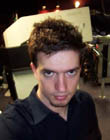
Posts: 165
From: San Francisco, CA
Registered: Feb 2004
|
 posted 04-15-2004 03:05 PM
posted 04-15-2004 03:05 PM


The last two plexes that I worked at (15 and 12, respectively) had either 1 or 2 screens that used a top masking system. I always had a number of issues with it, and would prefer that it get avoided as much as possible, though my guess would be it's somewhat unavoidable in certain circumstances.
At the 15-screen, there was always a note on the framing knob, telling to go 1/8 of a turn when switching masking, and arrows indicating which way to go. As long as you did that, it would stay framed. However, my big issue was that this meant that flat movies were shown with a greater area of screen than scope movies. If flat had (Random numbers, not anything close to actual size) 20 feet by 26 feet, then scope would be around 15 feet by 26 feet. It's fine for the flat movies, but then the scope ones are painfully small, since these top maskings tended to go on what were already the smallest screens in the theatre.
| IP: Logged
|
|
|
|
|
|
John Walsh
Film God

Posts: 2490
From: Connecticut, USA, Earth, Milky Way
Registered: Oct 1999
|
 posted 04-15-2004 03:44 PM
posted 04-15-2004 03:44 PM




How much the framing knob would have to be moved is a result of the lens focal length. Different people have different opinions of what is 'too' far, but I would not like to see the image have to be moved more than 0.100 inch up. I dislike the idea of having to move it at all, but the reality is often you are stuck with a situation and must deal with it. A theater we have (with a 90mm lens and a 60 foot throw), requires the operator thread one full sprocket out of frame for 'scope to position it correctly on screen. To clear the light from the lamp, I have seen two places where the brass trap (a JJ) was filed, and the heat baffle (a V8) had to be removed.
A suggestion (from a SMPTE article) is, when setting up the projector, is to properly aim the projector to project 'scope centered, and to move the frame knob 'off' for flat. The idea is both flat and 'scope are within the lamp 'spot' on the image. This doesn't solve having to move the framing, but does reduce the image moving far outside of the lamp spot, and going into the lens on an angle.
| IP: Logged
|
|
|
|
|
|
|
|
|
|
|
|
|
|
|
|
All times are Central (GMT -6:00)
|
This topic comprises 3 pages: 1 2 3
|
Powered by Infopop Corporation
UBB.classicTM
6.3.1.2
The Film-Tech Forums are designed for various members related to the cinema industry to express their opinions, viewpoints and testimonials on various products, services and events based upon speculation, personal knowledge and factual information through use, therefore all views represented here allow no liability upon the publishers of this web site and the owners of said views assume no liability for any ill will resulting from these postings. The posts made here are for educational as well as entertainment purposes and as such anyone viewing this portion of the website must accept these views as statements of the author of that opinion
and agrees to release the authors from any and all liability.
|

 Home
Home
 Products
Products
 Store
Store
 Forum
Forum
 Warehouse
Warehouse
 Contact Us
Contact Us




 Printer-friendly view of this topic
Printer-friendly view of this topic
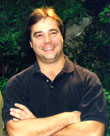




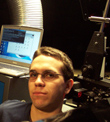

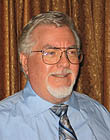



![[Wink]](wink.gif)

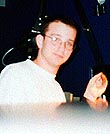


![[Smile]](smile.gif)



